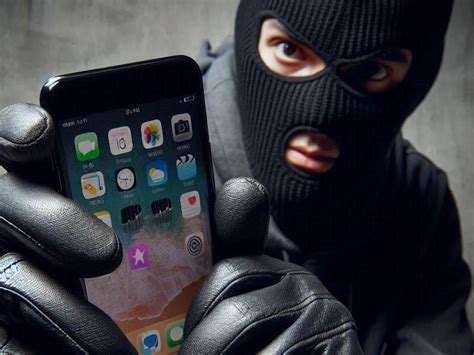
A New York City woman’s discovery of a buried cell phone outside her apartment building has sparked a police investigation and warnings about a potential high-tech theft tactic involving surveillance. The woman, identified only as Sarah, believes the phone was planted to spy on residents.
Sarah, a resident of an apartment building in an undisclosed location in New York City, made the unsettling discovery while tending to a small garden outside her building. According to a report from WPIX, Sarah initially thought she had unearthed a time capsule. However, upon closer inspection, she realized it was a cell phone encased in plastic wrap and buried just inches below the surface. “I thought it was a time capsule at first,” Sarah told WPIX. “But then I realized it was a phone wrapped in plastic wrap.”
The discovery prompted Sarah to contact the New York Police Department (NYPD), who immediately launched an investigation. Police officials have acknowledged the unusual nature of the find and are exploring various possibilities, including the potential for the device to have been used for illicit surveillance purposes targeting the building’s residents. Detectives are analyzing the phone’s data, including call logs, location history, and any installed applications, to determine its purpose and identify potential suspects. The NYPD has not released specific details about the ongoing investigation but confirmed they are taking the matter seriously, given the potential privacy implications.
The incident has raised concerns among cybersecurity experts and law enforcement officials about the potential emergence of sophisticated theft tactics. Burying a cell phone could allow perpetrators to remotely monitor activity around a specific location, gather sensitive information, and plan targeted attacks, such as burglaries or identity theft. The use of a buried phone could provide thieves with a covert means of gathering intelligence without physically being present at the location, making it more difficult to detect and apprehend them.
“This is definitely a concerning development,” said cybersecurity analyst Mark Thompson. “The fact that someone went to the trouble of burying a phone indicates a level of planning and sophistication that we don’t often see. It’s possible they were using it to monitor comings and goings, listen in on conversations, or even track the location of specific individuals.”
The incident has also triggered a wave of anxiety among residents of the apartment building and the surrounding community. Many are now questioning their personal security and taking extra precautions to protect their privacy. Some residents have reported installing additional security cameras and alarm systems, while others are being more vigilant about their surroundings. The building’s management has also increased security patrols and is considering implementing additional measures to enhance the safety of its tenants.
“It’s definitely unsettling to think that someone might have been watching us,” said one resident, who asked not to be identified. “I’m now much more careful about what I say and do when I’m outside the building. It’s a real invasion of privacy.”
Law enforcement officials are urging the public to remain vigilant and report any suspicious activity to the authorities. They are also advising individuals to take steps to protect their personal information and privacy, such as regularly updating their passwords, being cautious about sharing sensitive information online, and being aware of their surroundings.
The incident in New York City serves as a stark reminder of the ever-evolving nature of criminal tactics and the importance of staying informed about potential threats. As technology continues to advance, criminals are finding new and innovative ways to exploit vulnerabilities and target unsuspecting victims. By raising awareness and promoting vigilance, law enforcement officials and cybersecurity experts hope to prevent similar incidents from occurring in the future.
In-Depth Analysis
The discovery of the buried cell phone raises several critical questions about the intentions of those who planted it and the potential impact on the targeted community. The fact that the phone was wrapped in plastic suggests a deliberate attempt to protect it from the elements, ensuring it could remain functional for an extended period. This indicates a significant level of planning and resourcefulness on the part of the perpetrators.
One of the primary concerns is the potential use of the phone for surveillance purposes. With readily available spy apps and remote monitoring capabilities, a buried cell phone could be used to gather a wide range of information about the residents of the apartment building. This could include tracking their movements, listening in on conversations, and even capturing video footage. The information collected could then be used for various nefarious purposes, such as planning burglaries, committing identity theft, or even blackmailing individuals.
Another possibility is that the phone was used as part of a more complex criminal operation. For example, it could have been used to coordinate drug trafficking activities or facilitate other illegal transactions. The buried phone could serve as a secure communication channel, allowing criminals to communicate with each other without the risk of being intercepted by law enforcement.
The incident also highlights the increasing importance of cybersecurity awareness and the need for individuals to take proactive steps to protect their privacy. In today’s digital age, it is easier than ever for criminals to gather information about their targets through online sources, social media, and other means. Individuals need to be vigilant about what they share online and take steps to protect their personal information from falling into the wrong hands.
The NYPD’s investigation into the buried cell phone is ongoing, and it is still unclear who planted the device and what their intentions were. However, the incident serves as a wake-up call for law enforcement officials and the public alike. It is a reminder that criminals are constantly adapting their tactics and that we must remain vigilant in order to protect ourselves from becoming victims.
Expanded Context
The incident in New York City is not an isolated case. There have been several other reports of similar incidents occurring in other parts of the country and around the world. In some cases, buried cell phones have been linked to criminal organizations involved in drug trafficking, money laundering, and other illegal activities. In other cases, they have been used by individuals to stalk or harass their victims.
One notable example is the case of a woman in California who discovered a hidden camera in her bathroom. The camera was disguised as a smoke detector and was connected to a cell phone that was hidden in the attic. The woman’s ex-boyfriend was later arrested and charged with invasion of privacy.
These incidents underscore the importance of being aware of the potential risks associated with technology and taking steps to protect your privacy. It is essential to be vigilant about your surroundings and report any suspicious activity to the authorities. It is also important to be cautious about what you share online and to take steps to protect your personal information from falling into the wrong hands.
The use of technology for criminal purposes is a growing concern for law enforcement officials around the world. As technology continues to advance, criminals are finding new and innovative ways to exploit vulnerabilities and target unsuspecting victims. It is essential for law enforcement agencies to stay ahead of the curve and develop new strategies to combat these threats.
Preventative Measures and Recommendations
To mitigate the risk of falling victim to such tactics, security experts recommend several preventative measures:
- Be Aware of Your Surroundings: Pay attention to anything unusual or out of place near your home or apartment building. Report any suspicious activity to the authorities immediately.
- Secure Your Wireless Networks: Ensure your Wi-Fi network is password-protected and uses a strong encryption method (WPA3 is recommended). Regularly update your router’s firmware to patch any security vulnerabilities.
- Protect Your Personal Information: Be cautious about sharing sensitive information online or over the phone. Review your social media privacy settings and limit the amount of personal information that is publicly available.
- Regularly Inspect Your Property: Periodically check for any hidden devices or unusual objects around your home or apartment building. Pay close attention to areas that are easily accessible to the public.
- Install Security Cameras: Consider installing security cameras around your property to deter potential criminals and provide evidence in case of a crime.
- Use a VPN: When using public Wi-Fi networks, use a virtual private network (VPN) to encrypt your internet traffic and protect your data from being intercepted.
- Educate Yourself and Others: Stay informed about the latest cybersecurity threats and share this information with your family, friends, and neighbors.
Expert Opinions and Quotes
Several cybersecurity experts have weighed in on the incident, offering insights into the potential motives and implications.
“The fact that the phone was buried suggests a deliberate attempt to conceal it and avoid detection,” said cybersecurity expert and former FBI agent, Michael Davis. “This indicates that the perpetrators were likely engaged in some form of illegal activity and wanted to avoid being caught.”
“This incident should serve as a wake-up call for everyone,” said privacy advocate Sarah Miller. “We need to be more vigilant about protecting our privacy and taking steps to prevent ourselves from becoming victims of surveillance.”
“Technology is a double-edged sword,” said technology analyst John Smith. “It can be used for good or for evil. It is up to us to use it responsibly and to be aware of the potential risks.”
The incident has also prompted discussions among law enforcement officials about the need for better training and resources to combat technology-enabled crime.
“We need to provide our officers with the training and tools they need to investigate these types of crimes effectively,” said Police Chief Robert Jones. “We also need to work more closely with cybersecurity experts to stay ahead of the curve.”
Impact on the Community
The discovery of the buried cell phone has had a significant impact on the community, creating a sense of unease and fear among residents. Many are now questioning their personal security and taking extra precautions to protect their privacy.
“I’m now afraid to walk around my neighborhood,” said one resident, who asked not to be identified. “I don’t know who I can trust anymore.”
“I’m now much more careful about what I say and do when I’m outside the building,” said another resident. “I feel like I’m being watched all the time.”
The incident has also led to increased scrutiny of security measures in the area. Residents are demanding that the building management and local authorities take steps to improve security and prevent similar incidents from occurring in the future.
Legal Ramifications
The act of burying a cell phone for surveillance purposes could potentially violate several laws, depending on the specific circumstances and the intent of the perpetrators. These laws may include:
- Wiretapping Laws: Many states have laws that prohibit the interception of electronic communications without the consent of all parties involved. Burying a cell phone to listen in on conversations could potentially violate these laws.
- Privacy Laws: Some states have laws that protect individuals’ right to privacy. Burying a cell phone to gather information about individuals without their consent could potentially violate these laws.
- Stalking Laws: In some cases, burying a cell phone to track or harass an individual could constitute stalking, which is a criminal offense in many states.
- Trespassing Laws: Burying a cell phone on someone else’s property without their permission could constitute trespassing, which is also a criminal offense.
The specific charges that could be filed in this case would depend on the evidence gathered by law enforcement and the specific laws in the jurisdiction where the incident occurred.
Technological Aspects
The technology involved in this incident is relatively simple but can be highly effective. A basic cell phone with a long battery life, wrapped in plastic to protect it from the elements, can be used for a variety of surveillance purposes. The phone can be remotely controlled using readily available spy apps, which allow the user to:
- Track the phone’s location: The GPS capabilities of the phone can be used to track its location in real-time.
- Listen in on conversations: The phone’s microphone can be remotely activated to listen in on conversations within earshot of the device.
- Record audio and video: The phone’s camera can be remotely activated to record audio and video footage.
- Access call logs and text messages: The user can remotely access the phone’s call logs and text messages to gather information about the phone’s owner and their contacts.
These spy apps are often disguised as legitimate applications and can be difficult to detect. They can be installed on a phone without the owner’s knowledge or consent.
Countermeasures
Several countermeasures can be taken to detect and prevent the use of buried cell phones for surveillance purposes:
- Regular Sweeps: Conduct regular sweeps of your property to look for any hidden devices or unusual objects. Use a metal detector or a radio frequency detector to help locate hidden devices.
- Signal Jammers: Consider using a signal jammer to block cell phone signals in a specific area. However, be aware that signal jammers are illegal in some jurisdictions.
- Privacy Apps: Install privacy apps on your cell phone to detect and block spy apps. These apps can scan your phone for suspicious activity and alert you if any spy apps are detected.
- Physical Security: Improve the physical security of your property by installing security cameras, alarm systems, and motion sensors.
Conclusion
The discovery of the buried cell phone in New York City serves as a stark reminder of the ever-evolving nature of criminal tactics and the importance of staying informed about potential threats. As technology continues to advance, criminals are finding new and innovative ways to exploit vulnerabilities and target unsuspecting victims. By raising awareness and promoting vigilance, law enforcement officials and cybersecurity experts hope to prevent similar incidents from occurring in the future. The incident underscores the need for individuals to be proactive in protecting their privacy and taking steps to secure their homes and businesses. It also highlights the importance of collaboration between law enforcement, cybersecurity experts, and the public to combat technology-enabled crime.
Frequently Asked Questions (FAQ)
1. What exactly happened in the NYC incident?
A woman in New York City discovered a cell phone buried outside her apartment building. The phone was wrapped in plastic, suggesting it was deliberately concealed for a specific purpose. Authorities are investigating whether the phone was used for illicit surveillance of residents.
2. Why is this considered a “thief spy tactic”?
Burying a cell phone allows potential thieves to remotely monitor activity around a location, gather information on residents’ schedules, security measures, and valuable possessions. This information could then be used to plan burglaries or other crimes without being physically present at the scene. The ‘spy’ component refers to the clandestine data gathering.
3. What kind of information could a buried phone collect?
A buried phone could potentially collect a wide range of information, including:
- Audio recordings of conversations
- Video footage of people coming and going
- Location data of individuals entering and exiting the building
- Information from intercepted Wi-Fi signals (depending on the phone’s capabilities)
- Potentially even access to connected devices if the network is compromised
4. What should I do if I find a buried phone or something similar near my home?
If you find a buried phone or any other suspicious device near your home or apartment building, do the following:
- Do not touch it directly: Use gloves or another object to handle it.
- Document the location: Take photos or videos of the device and its surroundings.
- Contact the police immediately: Report the discovery to your local law enforcement agency and provide them with all the information you have.
- Avoid discussing the discovery publicly: Refrain from posting about it on social media or discussing it with neighbors until the police have completed their investigation.
5. How can I protect myself from this type of surveillance?
You can protect yourself by taking the following precautions:
- Be aware of your surroundings: Pay attention to anything unusual or out of place near your home.
- Secure your Wi-Fi network: Use a strong password and encryption to protect your network from unauthorized access.
- Protect your personal information: Be cautious about sharing sensitive information online or over the phone.
- Regularly inspect your property: Check for any hidden devices or unusual objects around your home.
- Install security cameras: Consider installing security cameras to deter potential criminals.
- Report any suspicious activity to the authorities.









